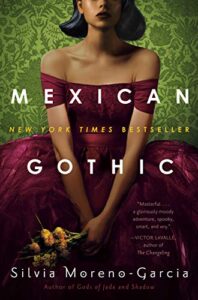The Lost Girls: A Vampire Revenge Story by Sonia Hartl
Page Street Publishing, 2022
ISBN: 9781645673149
Available: Hardcover, e-book, audiobook ( Bookshop.org )
In this book, a group of young women who were turned by the same gaslighting vampire team up to take him down.
Since 1987, Holly has been an eternal teenager, stuck with one of the era’s iconic fashion don’ts— crimped hair— after falling for pretty-boy vampire, Elton. Hartl starts this tale after the ever-after, with Holly working at a Taco Bell to make ends meet once her sexy vampire boyfriend fails to make good on the promise of eternal love. When Elton’s two other exes enter the scene, readers find out what they have in common, and the trio joins forces to try to break the alluring and totally predatory hold on his next victim— another teenage girl, Parker.
Parker and Holly develop a fast physical attraction as they get to know each other. Turning the teen girl victim trope on its ear, Hartl’s updated vampire story takes on patriarchy with a humorous tone, lots of action, and a solid dose of queer romance. Characters’ bisexuality (and sexuality, in general) is handled quite comfortably, with the long view of an immortal. Who better than vampires to go up against the centuries-old problem of patriarchy? Folks seeking grim horror may be disappointed by some of the romantic elements, but readers looking for a contemporary paranormal tale will find a lot to enjoy in this quirky, laugh-out-loud YA vampire story. The plot is fast-paced and unfolds to a satisfying conclusion. With a hearty dose of gory violence, this is likely to appeal to folks who enjoyed Lish McBride’s Hold Me Closer, Necromancer, Adam Rex’s Fat Vampire, and other horror-humor mashups. Recommended.
A cure for the common sparkle.
Reviewed by E. F. Schraeder







Follow Us!